Posted By: Elia Guidorzi | Posted On: December 17, 2024
Waterjet Cutting Machines: Breaking Down the Types and Their Best Applications
Waterjet cutting has revolutionized manufacturing, offering unmatched precision and versatility in shaping materials. Unlike traditional cutting methods, it employs a high-pressure stream of water, often mixed with abrasives, to slice through materials ranging from metals to delicate ceramics. In this article, TECHNI Waterjet® explores the principles of waterjet cutting, including its machine types, components, applications, and its transformative impact on modern industries. Whether you're an engineer, manufacturer, or simply curious, this guide will help you navigate the world of waterjet technology.
What Is Waterjet Cutting?
Waterjet cutting is a process that utilizes high-pressure water, often combined with abrasives, to cut through materials. This technology is widely valued for its ability to cut virtually any material without introducing heat, which can alter material properties.
The process works by forcing water through a small nozzle at pressures up to 94,000 PSI. For tougher materials, such as metal or stone, abrasives like garnet (the red abrasive on sandpaper) are added to the water stream, significantly enhancing its cutting power. The precision and versatility of waterjet cutting make it a go-to solution in industries like aerospace, automotive, and construction.
How Does a Waterjet Cutter Work?
Waterjet cutters rely on a series of interconnected processes to achieve their precision cuts. Below are the main stages:
- High-Pressure Water Generation: A pump generates water pressure, converting it into a powerful cutting force.
- Abrasive Mixing: For harder materials, abrasives are introduced into the water stream, creating a slurry with enhanced cutting capabilities.
- Material Cutting: The water-abrasive mix exits through a nozzle at supersonic speeds, grinding through the material.
- Waste Management: The catch tank collects water, abrasive and material waste, reducing environmental impact and ensuring workplace safety.

What Are the Different Types of Waterjet Cutting Machines?
Waterjet cutting machines come in several types, each designed for specific applications and materials.
Pure Waterjet Cutting Machines
Pure waterjet machines utilize water alone, making them ideal for softer materials like foam, rubber, and textiles.
- Applications: Cutting delicate materials without causing distortion.
- Pros: High precision and no need for abrasives.
- Cons: Limited to soft materials; ineffective on harder surfaces.
Abrasive Waterjet Cutting Machines
Adding abrasives to the water stream enables cutting through harder materials such as metals, ceramics, and glass.
- Applications: Fabrication of metal components, stone shaping, and glass cutting.
- Pros: Versatile, capable of cutting thicker and harder materials.
- Cons: Requires additional maintenance due to abrasive wear.
Hybrid Waterjet Machines
Hybrid machines integrate waterjet cutting with other technologies like plasma or laser cutting.
- Applications: Multi-material projects requiring the strengths of both technologies.
- Pros: Enhanced versatility and efficiency in complex projects.
- Cons: Higher initial investment and operational complexity.
What Are the Main Parts of a Waterjet Cutting Machine?
Waterjet cutting machines consist of several key components:
- Pump and Motor: Generate the high pressure required for cutting.
- Nozzle and Cutting Head: Direct the water-abrasive stream onto the material.
- Abrasive Delivery System: Supplies abrasives for cutting harder materials.
- CNC Control Unit: Guides the cutting process with precision.
- Catch Tank: Collects waste and reduces water splatter.
What Are the Advantages of Waterjet Cutting?
Waterjet cutting offers numerous advantages over traditional methods:
- Ability to cut virtually any material.
- No heat-affected zones (HAZ), preserving material integrity.
- High precision and clean edges.
- Environmentally friendly, with no harmful emissions.
- Minimal material wastage, optimizing resources.
What Materials Can Be Cut Using a Waterjet?
Waterjet cutting is compatible with a broad range of materials:
Metals
Waterjets efficiently cut steel, aluminum, titanium, and copper. Even thick materials can be processed with precision.
Non-Metals
Ideal for cutting glass, ceramics, plastics, and rubber, waterjets avoid cracking or melting sensitive materials.
Composites
Layered and fiber-reinforced materials are seamlessly cut without delamination, making waterjets perfect for aerospace and automotive components.
What Are the Best Applications for Waterjet Cutting?
Waterjet cutting finds applications across various industries:
Aerospace
- Cutting titanium and composite materials for aircraft components, ensuring precision and preserving material integrity without introducing heat-affected zones. It's especially valuable for prototyping and manufacturing lightweight yet durable parts.
Automotive
- Manufacturing gaskets, panels, and intricate components with clean edges and minimal material wastage. Waterjet cutting is ideal for handling various materials used in automotive production, such as metals, rubber, and plastics.
Construction
- Shaping stones, tiles, and architectural elements to meet specific design requirements. It allows for creating custom patterns, complex shapes, and detailed carvings in materials like granite, marble, and glass.
Electronics
- Precision cutting of circuit boards and delicate enclosures without causing thermal damage to sensitive components. Waterjet cutting is also ideal for prototyping and small-scale production, ensuring clean, burr-free edges for seamless assembly.
How Does Waterjet Cutting Compare to Other Cutting Technologies?
When compared to other methods, waterjet cutting offers distinct advantages:
- Laser Cutting: Superior for thin metals but less effective for thicker materials, especially Aluminum.
- Plasma Cutting: Faster for metals but produces heat-affected zones.
- Mechanical Cutting: Reliable for simple cuts but lacks versatility.
What Factors Should You Consider When Choosing a Waterjet Cutter?
Choosing the right machine involves considering:
- Material Type and Thickness: Determine the required cutting pump horsepower.
- Cutting Speed and Precision: Ensure efficiency for your projects.
- Operating Costs: Evaluate abrasive consumption and energy requirements.
- Maintenance and Durability: Opt for machines with robust designs and minimal downtime.
How to Use a Waterjet Cutter Effectively?
What Are the Most Important Preparations for Waterjet Cutting?
- Material setup and alignment.
- Choosing the right abrasive type.
- Calibrating cutting parameters.
Safety Tips for Waterjet Cutting
- Wear protective gear.
- Follow manufacturer operating guidelines.
- Inspect hoses and fittings regularly.
Design Tips for Waterjet Cutting
- Minimize tight corners to reduce cutting delays.
- Account for kerf width in your designs.
- Use nesting software to optimize material usage.
How Expensive Is Waterjet Cutting?
How Much Does a Waterjet Cutting Machine Cost?
The cost of waterjet cutting machines varies depending on the type. Pure waterjet machines are generally more affordable, while abrasive waterjet machines and hybrid models come at higher price points due to their advanced capabilities. Factors such as machine size, features, and brand also influence pricing.
What Are the Operating Costs of Waterjet Cutting?
- Abrasive consumption.
- Electricity usage.
- Regular maintenance.
What Are the Best Waterjet Cutting Machines on the Market?
When choosing a waterjet cutter, look for:
- Cutting speed and accuracy.
- Build quality and reliability.
- Software compatibility and customer support.
What Are Common Challenges in Waterjet Cutting?
- Abrasive clogging.
- Managing water and waste disposal.
- Wear and tear on components.
What Are the Environmental Impacts of Waterjet Cutting?
Waterjet cutting is eco-friendly:
- Produces no toxic fumes.
- Generates minimal material waste.
- Allows for eco-friendly abrasive options.
Conclusion
Waterjet cutting stands out for its versatility, precision, and eco-friendliness. From aerospace to construction, it supports diverse industries with unmatched efficiency. Its ability to cut through a wide range of materials without compromising structural integrity makes it an invaluable tool in modern manufacturing. For businesses seeking a reliable, innovative cutting solution, waterjet technology is a worthwhile investment that can drive both productivity and sustainability.
For more information contact the experts at Southern Fabricating Machinery Sales to assist you with selecting the right new or used waterjet cutting system for your needs.







